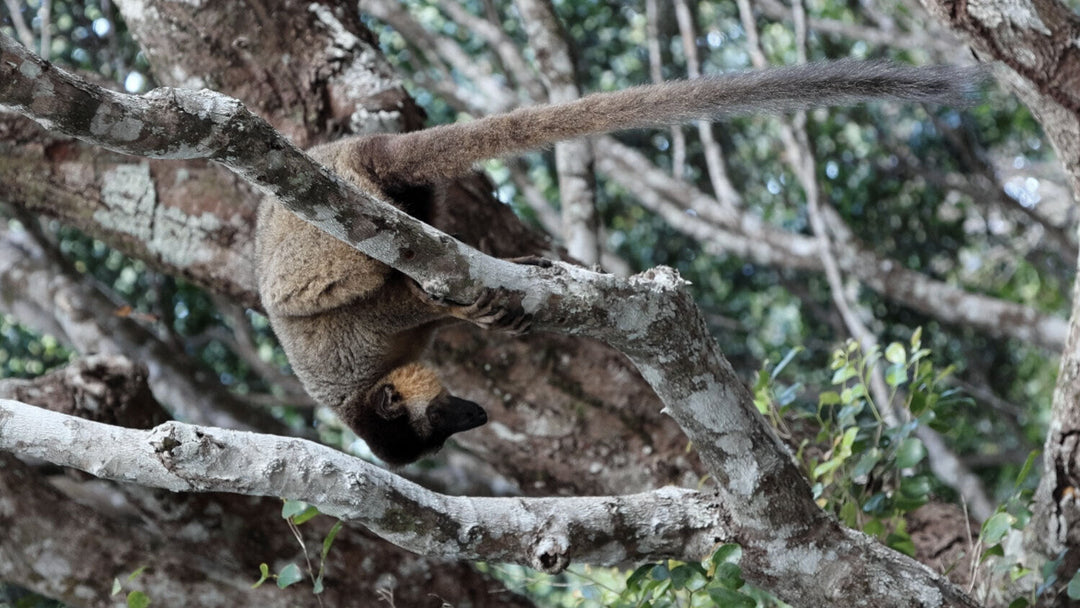Seeing in the Dark: Thermal Imaging Cameras are Transforming Nocturnal Wildlife Surveys
Nocturnal wildlife surveys present unique challenges due to limited visibility.
In recent years, thermal imaging cameras have emerged as a groundbreaking technology for monitoring wildlife in low-light conditions. As technology has advanced and is gradually becoming more affordable, we have seen a surge in uptake from conservationists who are using thermal imaging cameras in innovative ways to learn about and monitor the lives of nocturnal wildlife.
Seeing in the dark
Thermal imaging cameras utilise infrared radiation to detect heat signatures emitted by living beings and inanimate objects. For nocturnal surveys, this effectively means a surveyor can see wildlife in the dark! In this article, we will explore five compelling reasons why thermal imaging cameras are excellent tools for conducting nocturnal wildlife surveys. However, it's important to note that thermal cameras are not limited to nocturnal use; during daylight, these cameras can still detect temperature differences.

Hedgehogs become a lot easier to spot!
1. Non-Intrusive Observation
Conducting wildlife surveys can involve the risk of disturbing animals or altering their behaviours. Thermal imaging cameras offer a non-intrusive monitoring solution that minimises human interference. These cameras are operated from a distance, with ranges varying from a few metres to over 2 km, depending on the specifications of the thermal imager and survey needs. Thermal imaging cameras do not emit any light or sound, so they allow the observation of wildlife from a safe distance without causing stress to animals or influencing their behaviours. This non-invasive approach is especially crucial for studying elusive and sensitive species that are highly susceptible to human disturbance, as well as detecting well-hidden or camouflaged wildlife.
 An occupied bat box glows when viewed with a thermal imager
An occupied bat box glows when viewed with a thermal imager
2. Observing Wildlife in Real-Time
Thermal imaging technology enables real-time tracking of animal movements, making it easier to observe species, behaviours and habitat use during the night. Animal movements can be tracked across an area, providing valuable insights into behaviours such as feeding and foraging, interactions with their environment and migration routes.
3. Long Range
A unique feature of thermal imaging cameras is their impressive operating range, with many entry-level models now offering detection ranges exceeding 1km. These cameras can cover wide areas, depending on their specifications, enabling researchers and conservationists to monitor large regions effectively. This greatly increases the chances of spotting various nocturnal wildlife activities. They also work effectively at close range too, with closer objects appearing more detailed so behaviours such as bat emergence/re-entry can be observed.
4. Recording Capabilities
Thermal imaging cameras often have both photo and video recording capabilities, which serve multiple purposes in wildlife conservation. Fundamentally, this creates visual evidence of species and their behaviour, aiding in documentation. There are other applications of the footage too, for example, counting of large animal groups, such as seal colonies or bird flocks, supporting population monitoring efforts.
5. Detecting Poaching and Illegal Activity
Wildlife poaching and illegal activities often take place in remote areas or during the cover of darkness, making conventional surveillance methods challenging. However, thermal cameras can detect the body heat of humans and animals, even in low-light conditions, enabling authorities to monitor large areas effectively. By identifying unusual heat patterns or human presence where it shouldn't be, thermal imaging helps law enforcement and conservationists to quickly respond to potential threats, apprehend poachers, and protect vulnerable wildlife from illegal activities. It serves as a crucial tool in combating wildlife crime and preserving endangered species.
In Summary
Thermal imaging cameras have transformed nocturnal wildlife surveys. Their non-intrusive approach allows for safe observation of animals without disturbing them, making them ideal for studying sensitive species. Real-time tracking provides valuable insights into animal behaviours, while long-range capabilities cover vast areas. The cameras' recording features aid documentation and population monitoring, and they play a crucial role in combating wildlife poaching and illegal activities. We’re looking forward to seeing innovations with thermal imaging technology and how it’s used in conservation in years to come!
FAQs
1. How do thermal imaging cameras work for wildlife surveys?
Thermal imaging cameras detect heat signatures emitted by living beings and objects using infrared radiation, enabling observation even in the dark.
2. What are the benefits of using thermal imaging cameras for nocturnal wildlife surveys?
Thermal cameras offer non-intrusive observation and recording, real-time tracking of animal movements and long-range capabilities, allowing for safe and efficient monitoring of nocturnal wildlife.
3. Can thermal imaging cameras be used during daylight?
Yes, thermal cameras are not limited to nocturnal use; they can still detect temperature differences and provide valuable insights in daylight.
4. What recording capabilities do thermal imaging cameras have?
Thermal cameras often have photo and video recording abilities depending on the model, serving multiple purposes in wildlife conservation, including documentation and population monitoring.
5. How do thermal imaging cameras aid in combating illegal wildlife activities?
Thermal cameras detect body heat, allowing the identification of potential threats and illegal activities, assisting law enforcement and conservationists in protecting vulnerable wildlife.
6. What is the best thermal imaging camera for nocturnal wildlife watching?
We stock a curated range of thermal imaging cameras in the NatureSpy shop that are excellent for observing nocturnal wildlife. See the descriptions of each thermal imaging camera to identify the best equipment for your needs.


